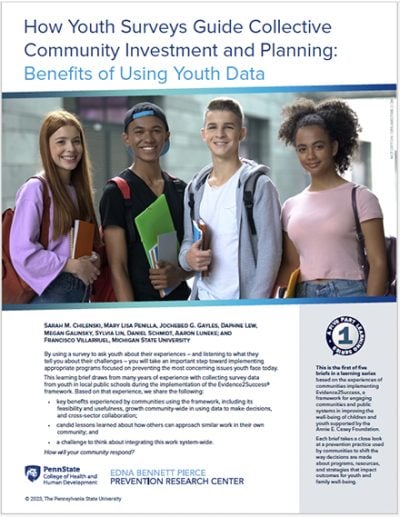Summary
This learning brief, released by the Edna Bennett Pierce Prevention Research Center at Penn State, opens by describing why and where youth surveys add value. It leans on lessons from six communities that introduced and implemented these survey in schools under an Evidence2Success® framework. The document closes by offering practical suggestions, advice and steps for adopting this approach and leveraging a survey’s findings.
The end goal: Empower community leaders, residents, educators and program providers to systematically and strategically implement a survey and utilize its results to make better, smarter decisions about youth and family programs.
About YES
The Youth Experience Survey (YES) asks students in middle school and high school about relevant issues concerning health, safety, and well-being. Questions are designed to elicit what risks young people face and what protective factors are at play.
YES builds upon existing surveys and utilizes data on a wide range of topics to provide a fuller, clearer picture of youth health and well-being. Developed to support the Evidence2Success framework which provides cities and states with a road map for involving communities in making smart investments in evidence-based programs, the YES allows leaders from school district officials to neighborhood organizations to make decisions rooted in data and input directly from their local youth.
Why Youth Surveys Matter
Local leaders need timely input from young people in their communities to create effective programs and interventions that help prevent challenges facing youth. Communities, policymakers and officials often rely on national survey data or state surveys, but additional tools can help municipal and county officials better learn their youth’s needs.







